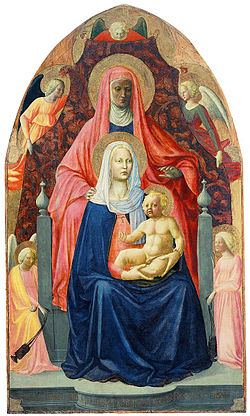
The Virgin and Child with Saint Anne [1] [2] or Madonna and Child with Saint Anne [3] [4] is a subject in Christian art showing Saint Anne with her daughter, the Virgin Mary, and her grandson Jesus. [5] This depiction has been popular in Germany and neighboring countries since the 14th century.














